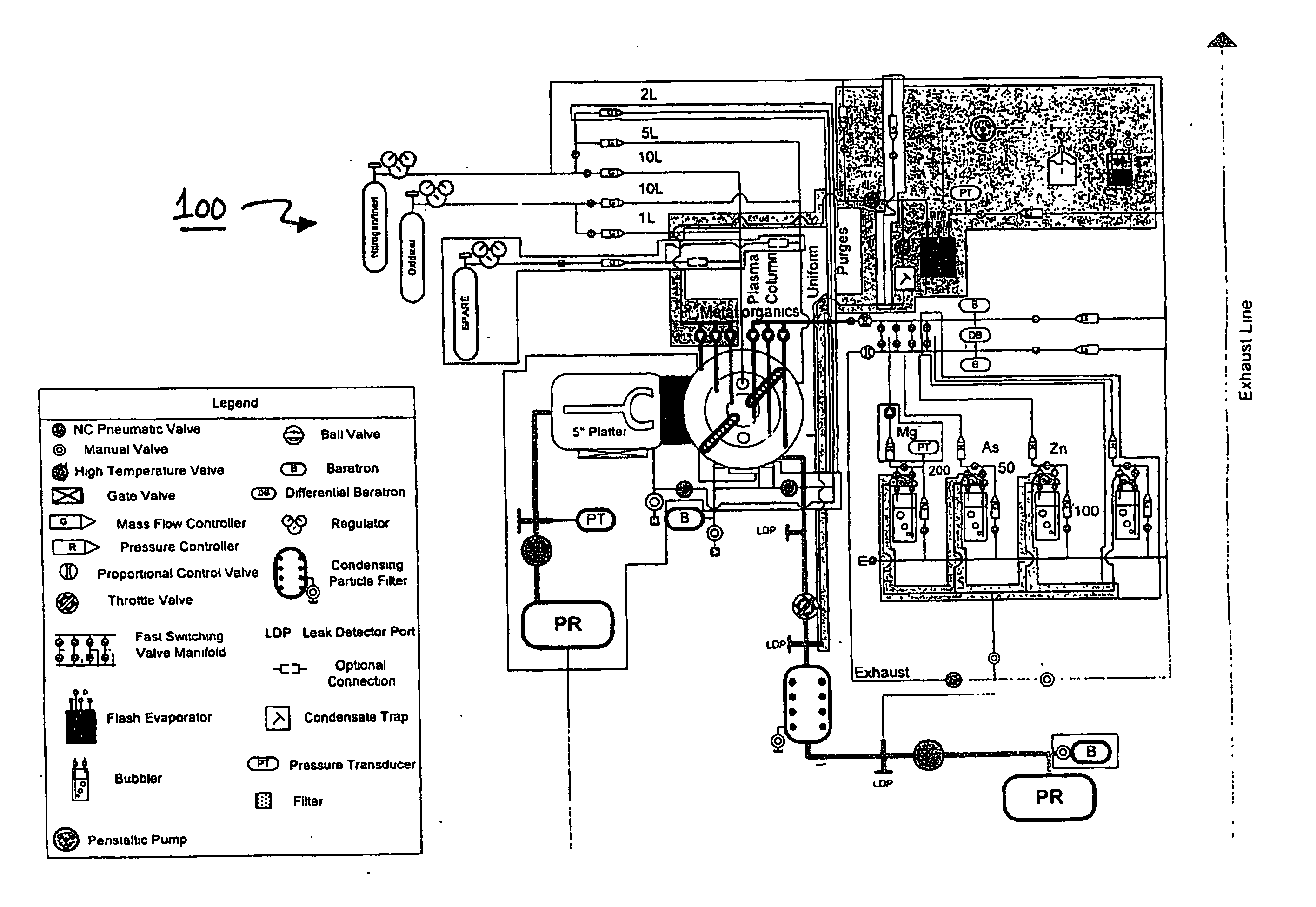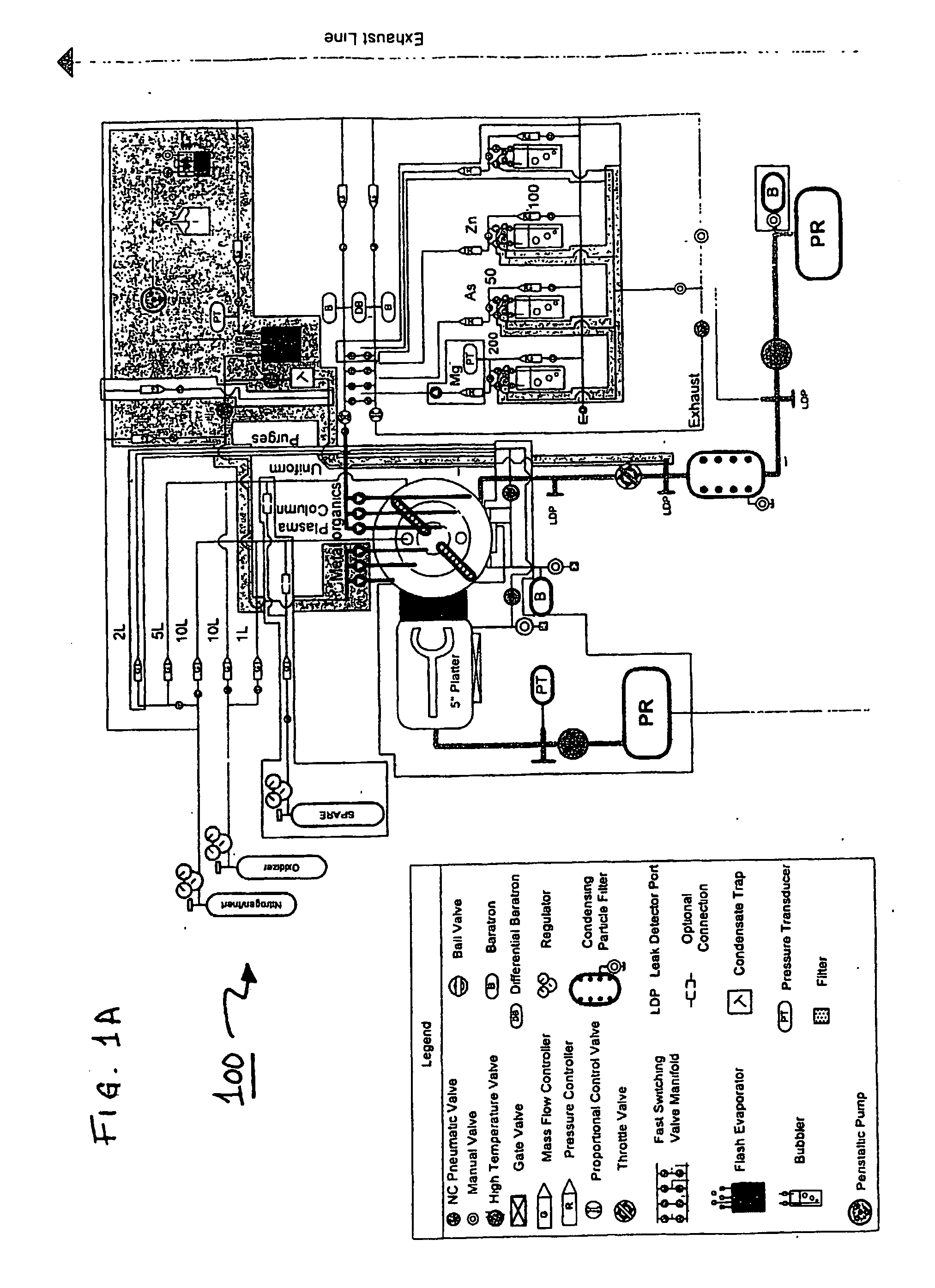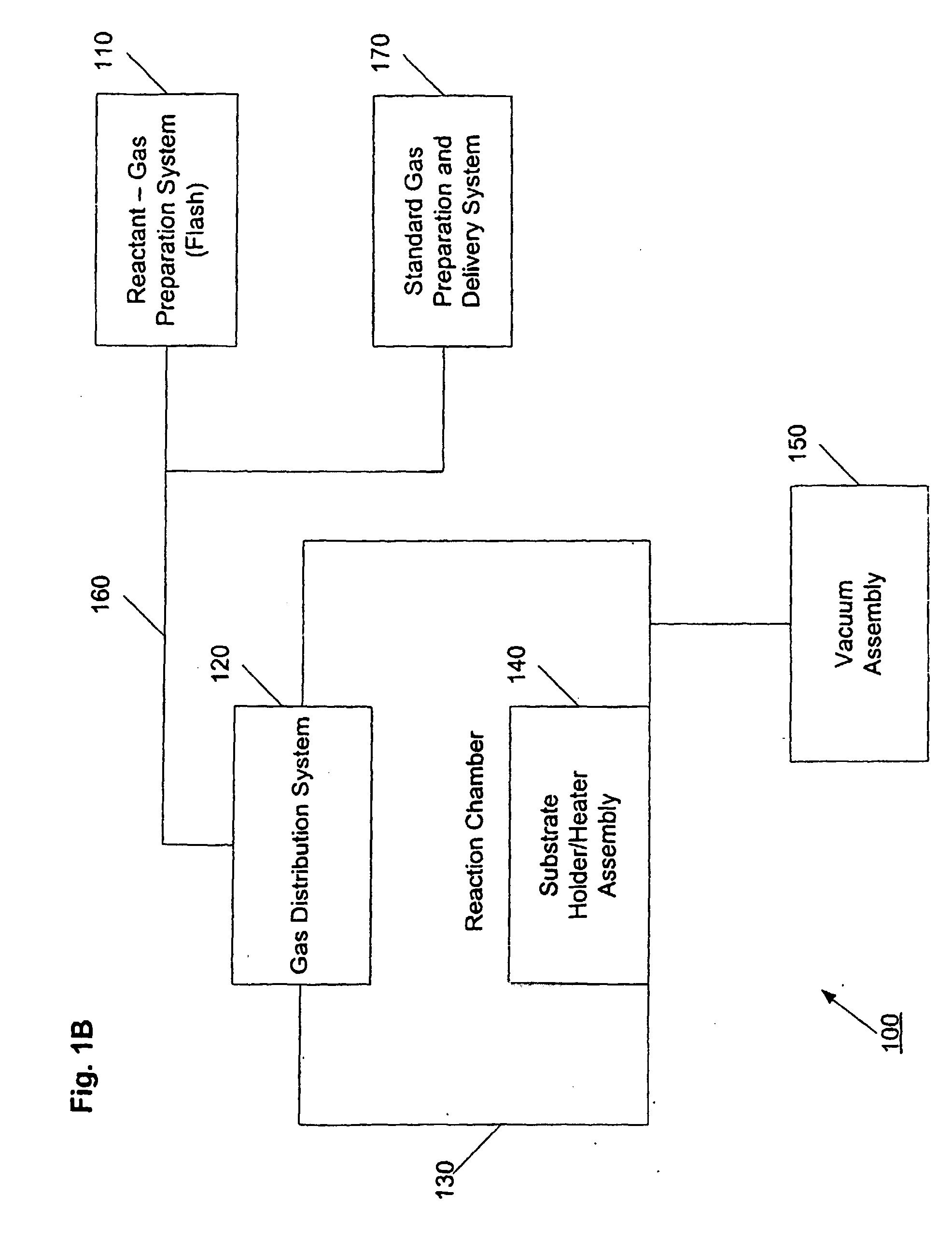System and Method for Forming Multi-Component Films
- Summary
- Abstract
- Description
- Claims
- Application Information
AI Technical Summary
Benefits of technology
Problems solved by technology
Method used
Image
Examples
example 1
Amorphous Lithium Niobate Films
[0100] Lithium niobate films grown at a substrate temperature of less than about 450° C. and preferably less than about 425° C. are amorphous and easily etched in a solution of 5% HF or by reactive-ion etching or by ion milling. This makes amorphous lithium niobate films particularly suitable for lithographic patterning into fine structures or devices. The precursor cocktail is prepared as described above. Typical deposition parameters for forming amorphous lithium niobate are summarized in Table 3.
TABLE 3AMORPHOUS LITHIUM NIOBATEsubstrate temperature300-425°C.flash vaporization temperature of cocktail230°C.pressure of reaction chamber10TorrAr or N2 (inert gas) flow rate to reaction chamber500sccmO2 (oxidant gas) flow rate to reaction chamber3000sccmAr or N2 (push gas) flow rate to flash evaporator200sccmsubstrate rotation speed750rpm
[0101] For a feed rate of the precursor cocktail of about 1 ml / min, the growth rate of amorphous lithium niobate film...
example 2
Mixed-Phase Lithium Niobate Films
[0102] Lithium niobate films grown at a substrate temperature of approximately 450° C. have microcrystalline regions in an amorphous matrix. These mixed-phase films are easily etched in a solution of 5% HF but do not yield uniform sidewall profiles when lithographically patterned. This likely is due to the different etch rates of the microcrystalline regions and the amorphous matrix.
[0103] The deposition parameters for forming mixed-phase lithium-niobate films may be as shown in Table 1, 2, or 3, except for the deposition (substrate) temperature. For a feed rate of the precursor cocktail of about 1 m / min, the growth rate of mixed-phase films is approximately 0.6 μm / h.
example 3
Crystalline Lithium Niobate Films
[0104] Lithium niobate films grown at a substrate temperature above 475° C. are crystalline. The growth rate is strongly dependent on the substrate temperature and may vary from approximately 0.9 μm / h at 475° C. to approximately 1.8 μm / h at 500° C. to approximately 3.0 μm / h at 625° C., for a feed rate of the precursor cocktail of about 1 ml / min. In comparison, conventional methods for forming crystalline lithium niobate films have a reported deposition rate of only about 100 nm / h at 640° C. and only about 150 nm / h at 700° C. Therefore, the present invention provides a system and a method for depositing lithium niobate films at a deposition rate that is over an order of magnitude greater than that of conventional methods, at comparable deposition temperatures.
[0105]FIG. 10 is a graph showing how the deposition rate of lithium niobate varies as a function of the deposition (substrate) temperature, for temperatures up to 500° C. and for a fixed feed r...
PUM
| Property | Measurement | Unit |
|---|---|---|
| Temperature | aaaaa | aaaaa |
| Temperature | aaaaa | aaaaa |
| Length | aaaaa | aaaaa |
Abstract
Description
Claims
Application Information
 Login to View More
Login to View More - Generate Ideas
- Intellectual Property
- Life Sciences
- Materials
- Tech Scout
- Unparalleled Data Quality
- Higher Quality Content
- 60% Fewer Hallucinations
Browse by: Latest US Patents, China's latest patents, Technical Efficacy Thesaurus, Application Domain, Technology Topic, Popular Technical Reports.
© 2025 PatSnap. All rights reserved.Legal|Privacy policy|Modern Slavery Act Transparency Statement|Sitemap|About US| Contact US: help@patsnap.com



